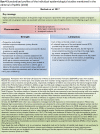Contribution to the ongoing discussion on fluoride toxicity
- PMID: 34095968
- PMCID: PMC8241794
- DOI: 10.1007/s00204-021-03072-6
Contribution to the ongoing discussion on fluoride toxicity
Abstract
Since the addition of fluoride to drinking water in the 1940s, there have been frequent and sometimes heated discussions regarding its benefits and risks. In a recently published review, we addressed the question if current exposure levels in Europe represent a risk to human health. This review was discussed in an editorial asking why we did not calculate benchmark doses (BMD) of fluoride neurotoxicity for humans. Here, we address the question, why it is problematic to calculate BMDs based on the currently available data. Briefly, the conclusions of the available studies are not homogeneous, reporting negative as well as positive results; moreover, the positive studies lack control of confounding factors such as the influence of well-known neurotoxicants. We also discuss the limitations of several further epidemiological studies that did not meet the inclusion criteria of our review. Finally, it is important to not only focus on epidemiological studies. Rather, risk analysis should consider all available data, including epidemiological, animal, as well as in vitro studies. Despite remaining uncertainties, the totality of evidence does not support the notion that fluoride should be considered a human developmental neurotoxicant at current exposure levels in European countries.
Figures







References
-
- Aggeborn L, Oehman M (2017) The effects of fluoride in drinking water. Uppsala: Institute for Evaluation of Labour Market and Education Policy, p. 1–83. https://www.ifau.se/globalassets/pdf/se/2017/wp2017-20-the-effects-of-fl...
-
- Aggeborn L, Oehman M (2021) The effects of fluoride in drinking water. Journal of Political Economy 129(2):465–491. 10.1086/711915 - DOI
Publication types
MeSH terms
Substances
LinkOut - more resources
Full Text Sources
Medical

